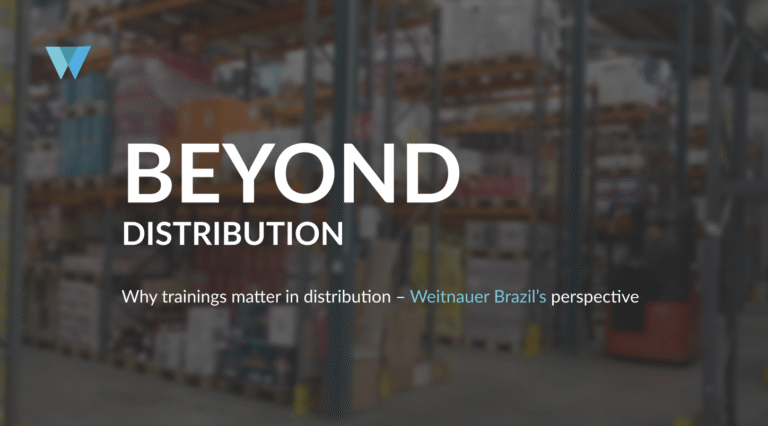The Eurasian Economic Union (EAEU) offers direct access to 180 million eager consumers seeking quality international products. Belarus sits at this market’s heart—a doorway country linking CIS member states through well-worn trade paths. For international brands in Belarus, this Eastern European country could be a genuine springboard for regional growth of your brand.
Since 2006, the Weitnauer Group has connected global brands with these consumers. Profits continued even when economies stuttered. The results prove something worth noting: with smart tactics, the Belarus EAEU market pays dividends for brands expanding their global reach.
The EAEU and Belarus: A Strategic Market
Five countries form the Eurasian Economic Union business zone—Armenia, Belarus, Kazakhstan, Kyrgyzstan, and Russia. Together, they’ve created a trade space where goods move freely once cleared at any entry point.
Three main factors make Belarus a significant regional member:
- Strategic positioning: Sits between the East and the West, cutting transit times dramatically
- CIS market connection: Offers an entrance to the EAEU’s large customer base, who prioritize authentic products over counterfeits
- Advanced logistics infrastructure: Road, rail, and air connections reach all member countries efficiently and it’s increasingly aligned with Western standards
These factors create practical Belarus business opportunities for brands seeking the fastest route to regional sales without multiplying their operational costs.
Key Opportunities for International Brands
The Belarus-EAEU pathway delivers several concrete advantages for international companies:
A Single Market Entry Point
Understanding how to enter the EAEU market via Belarus begins with appreciating its simplified approach: one company registration, one warehouse facility, and one distribution partnership grant access to five countries. This streamlined methodology reduces administrative complexity, accelerates market entry timelines, and optimizes investment efficiency.
Demand For Luxury Brands
The appetite for quality products keeps growing. Luxury distribution in Belarus shows steady sales growth where Western alternatives exist. Opportunities for luxury brands in Belarus stretch beyond local buyers:
- Neighbors cross borders specifically for shopping trips
- Business travelers pick up gifts during Minsk layovers
- Wealthy Kazakhs and Kyrgyz citizens make special purchases unavailable at home
Strategic Distribution Advantages
Belarus functions as an excellent natural supply hub thanks to its central location and effective logistics. Major EAEU cities can be reached by truck within 36 hours, and all forms of transportation—road, rail, and air—connect effortlessly with member nations. Furthermore, duty-free retail channels in airports and border zones provide advantages to distribution enterprises, reinforcing Belarus’ appeal as a regional logistics hub.
Main Challenges to Consider
Success requires clear understanding of several market realities:
- Economic Instability
Belarus goes through occasional changes in currency value and economic policies that directly affect retail operations. Local economic policies can change unexpectedly, impacting import costs and how much consumers can buy. Foreign brands must be flexible with pricing and quickly change their inventory to stay profitable. International brands benefit from having experienced local partners who can offer strategic guidance during economic transitions—helping to protect profit margins and ensure sustainable growth.
- Intellectual Property Vulnerabilities
Brand protection demands attention. While legal frameworks have strengthened, counterfeit goods appear more frequently than in Western markets. Companies must monitor distribution channels vigilantly, especially for premium products where fakes directly impact financial performance and reputation.
How Weitnauer Group Tackles the Region
The Weitnauer Group CIS has built a market approach that has successfully launched numerous international brands since 2006. Three practical skills make these results possible:
Applied Market Intelligence
The applied methodology begins with factual analysis:
- Consumer segmentation expertise
- Comprehensive tracking of purchasing patterns across EAEU demographics
- Price point testing prior to full market deployment
- Competitive mapping to identify viable market opportunities
- Regulatory proficiency
- Pre-entry compliance assessment for all product categories
- Documentation management optimized for customs clearance
- Continuous monitoring of regulatory developments across member states
This approach prevents costly market entry mishaps and precisely targets optimal consumer segments from inception.
Operational Excellence
Weitnauer’s physical infrastructure delivers measurable efficiency:
- Strategically located warehousing with appropriate environmental controls
- Inventory management systems to ensure optimal stock availability
- Established customs relationships, facilitating efficient border clearance
- Distribution networks reaching primary and secondary markets alike
Brand Image Protection
For luxury distribution in Belarus and premium segments, Weitnauer ensures:
- Selective retail placement aligned with brand positioning requirements
- Local marketing execution consistent with global brand standards
- Staff education programs for accurate brand representation
- Counterfeit prevention measures and distribution channel monitoring
Weitnauer’s work with watch and jewelry distribution in the CIS shows how proper execution keeps brand reputation intact while maximizing your sales potential.
Smart Strategies for Brands Entering the EAEU via Belarus
Successful EAEU market entry requires methodical approaches built on market realities:
Phased Implementation
A sequential market approach delivers optimal results:
- Start with Belarus as the initial market and operational center
- Expand to the rest of CIS after operational validation
- Add Kazakhstan and additional members as your supply lines stabilize
Strategic Partnership Selection
Choose potential partners based on:
- Actual compliance records you can verify
- Physical facilities that suit your specific products
- Real experience with brands similar to yours
Weitnauer Group CIS provides both the operational capabilities and the strategic guidance needed by international brands in Belarus for lasting and sustainable regional success.
Conclusion
The Belarus EAEU market offers genuine growth with clear paths forward. Yes, challenges exist—but with experienced local partners who understand both regulatory mazes and consumer desires, these hurdles shrink considerably.
For international brands in Belarus and the EAEU, Weitnauer Group in CIS brings local expertise, a solid distribution network, and reliable brand protection systems. We create lasting and successful businesses in this promising region that will benefit from 180 million potential customers. Weitnauer’s already established infrastructure makes Belarus an excellent launchpad for you, rather than just another dot on the map. Brands that take action now could find themselves with strong market positions while their competitors remain in planning stages.
CIS Market Entry for International Brands: Strategies, Challenges, and Opportunities
The Commonwealth of Independent States (CIS) is emerging as a compelling destination for international brands looking to expand into fast-growing and under-penetrated markets. With rising consumer spending, the CIS region offers opportunities across categories—from luxury goods to cosmetics, fashion, and electronics.
But success in the CIS isn’t automatic. Market entry requires a strategic approach that considers logistical, regulatory, and cultural dynamics across a highly diverse region. For international brands, choosing the right strategy and understanding how to adapt to local market conditions are essential for long-term growth.
Understanding the CIS Market Landscape
The CIS includes markets with distinct regulatory systems, economic profiles, and consumer behaviors. Collectively, they are experiencing:
- Rising middle-class purchasing power
- Expanding domestic retail sectors
- Growth in duty-free and travel retail channels
Regional integration efforts like the Eurasian Economic Union (EAEU) are simplifying cross-border trade through shared customs regulations and tariff reduction agreements. Bilateral trade agreements between CIS states and international markets further reduce barriers to entry.
Understanding each market’s economic drivers and trade policies allows brands to tailor their entry strategies and scale more efficiently across the region.
Distribution and Logistics: Critical Entry Pillars
Robust logistics and reliable local distribution are essential to operating successfully in CIS markets. The region presents challenges such as:
- Fragmented infrastructure and supply chains
- Complex customs and compliance processes
- Unpredictable transportation costs
International brands need agile logistics solutions and trusted partners with strong on-the-ground capabilities. Efficient warehousing, customs clearance processes, and multi-modal transportation networks are critical to ensuring products are available across retail and e-commerce channels with minimal delays.
As retail evolves across the CIS, a multi-channel strategy is increasingly essential—integrating traditional stores, e-commerce platforms, and travel retail to maximize visibility and reach.
Market Entry Strategies for the CIS Region
Brands can choose from several proven models when entering the CIS, each with its own level of investment, control, and risk.
1. Direct Exporting
A common first step, direct exporting allows brands to test CIS markets by selling products to regional distributors or retailers. This approach involves relatively low investment but requires careful oversight of supply chains, pricing, and compliance.
2. Travel Retail
Duty-free and travel retail offer a low-risk, high-visibility way to introduce products to CIS consumers. Airports, border shops, and cruise terminals are ideal for premium products, providing exposure to cross-border shoppers and affluent travelers.
3. Licensing and Franchising
Licensing agreements allow local businesses to produce or distribute branded products under international trademarks. Franchising—especially for fashion, food & beverage, and beauty brands—enables rapid expansion through local operators familiar with consumer behavior and retail norms.
4. Joint Ventures and Strategic Partnerships
JVs and alliances with regional players help brands leverage local knowledge, navigate regulations, and reduce operational risk. This model is especially effective for sectors with regulatory complexity, such as pharmaceuticals or alcohol.
5. Wholly Owned Subsidiaries
Setting up a local office provides full control over operations but requires significant investment. Brands must manage hiring, tax obligations, and retail development internally. This is best suited for companies with long-term CIS growth plans and a clear understanding of the region.
6. E-Commerce and Digital Channels
With the rise of platforms like Wildberries, Ozon, and Lamoda, e-commerce is becoming a powerful entry point. Brands can reach consumers across the region with relatively low setup costs. However, success requires:
- Localized content and payment solutions
- Efficient last-mile delivery
- Customer service in regional languages
A hybrid model, combining online and offline strategies, can offer the best results for sustained brand growth.
Overcoming Common Challenges
While opportunities are clear, the CIS region also presents unique challenges:
Regulatory Complexity
Each country has its own import laws, certification requirements, and tax structures. Delays and unexpected costs are common without a deep understanding of local compliance. Working with legal and trade experts is essential.
Cultural and Consumer Adaptation
Marketing and retail strategies must be localized. What resonates with consumers in Almaty may fall flat in Baku or Tashkent. Success depends on adapting messaging, pricing, and branding to local tastes and purchasing behaviors.
Economic and Political Volatility
Currency fluctuations, shifting policies, and geopolitical developments can disrupt operations. Diversified sales channels, flexible pricing models, and responsive supply chains help reduce exposure and ensure business continuity.
Final Thoughts: Strategic Focus Wins the CIS Market
For international brands, the CIS region is full of potential—but only for those who approach it with clear strategies and informed decision-making. Whether entering through travel retail, partnerships, or e-commerce, success hinges on:
- Selecting the right market entry model
- Building reliable distribution networks
- Localizing marketing and retail execution
The CIS is no longer a frontier—it’s a region with rising consumer expectations and growing sophistication. For brands ready to commit, it offers substantial returns and lasting brand equity across one of the world’s most dynamic emerging regions.


